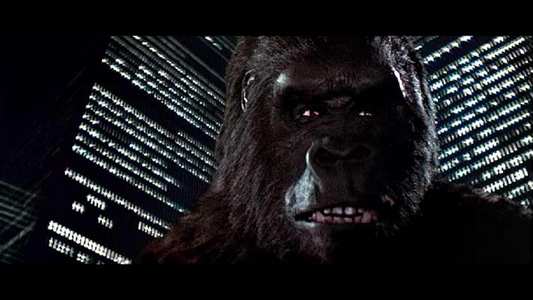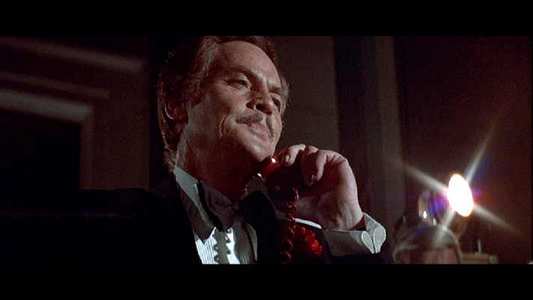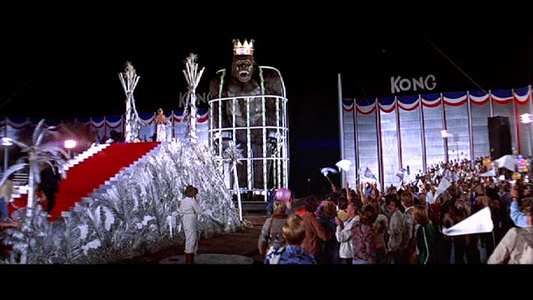Review of King Kong: The Legend Reborn
Introduction
In 1933, Merian C Cooper and Ernest B Schoedsack made one of the truly classic and totally original movies of the 20th Century and certainly of the horror genre. This isn`t it.
Dino DeLaurentiis`s 1976 remake was critically vilified at the time of its release. Twenty-six years on, the movie`s place in cinema history ought to be reconsidered, because it`s not half bad. Certainly unfavourable parallels can be drawn with the classic Kong movie, but I found it a great deal more entertaining than I remembered it. I saw the picture on its original release, and I recall being unimpressed. I`ve caught bits of it on tv reruns, but they have always been terrible pan`n`scan copies full of enlarged grain and negative dust. While this DVD issue isn`t world-class, it has been an eye-opening revisitation of an old movie.
At the time, the summer blockbuster movie trend was just starting. There had been a couple of big disaster movies, and then in 1975 Universal released "Jaws". "Kong" would be one of the key event pictures of 1976, just before the floodgates were opened by "Star Wars" the following year. The studios were facing lean times, and tended to be cautious with their money, which meant a golden age for European producers who could get financing from outside the Hollywood community. Movies such as Richard Lester`s Three Musketeer movies and the original Superman trilogy were made at that time and on that basis, using cheaper European talent and technicians, then getting the major Hollywood studios to distribute the movies. Remaking "Kong" was generally seen as ill-considered at the time. The 1933 original did not need remaking, in much the same way as Gone With The Wind, Wizard of Oz and Casablanca didn`t. Universal Pictures were toying with the idea as well, as a showcase for their multitrack, low-frequency-effect sound system "Sensurround", but DeLaurentiis got his production off the ground first. Being an independent producer, he financed the movie and Paramount only got involved to pick up the tab when the movie was completed.
Unfortunately for DeLaurentiis, the story required the movie to be made Stateside, and thus more expensively. A high-spectacle project, the effects budget would have to dominate the production and economies were made by casting largely unknown actors in the major roles. The original intention had been for Barbra Streisand to play the Fay Wray part, but the part went to a young actress making her debut called Jessica Lange. Although little was made of her performance at the time, one can see the actress`s strengths playing a largely thankless role. Her character Dwan (she changed the spelling of "Dawn" to be more memorable) is one of those Farrah Fawcett-style starlets of the mid seventies, a mixture of tough cookie and innocent. Saved from the destruction of her boyfriend`s yacht because she didn`t want to watch "Deep Throat", she is the only survivor and is picked up by the oil exploration team on their way to Kong`s island. She is anything but a Fay Wray-style scream queen in her interaction with Kong, and personally I`d have loved to have seen the movie take a more whimsical turn about Kong`s adventures in New York than aping (sorry) the 1933 original`s ending.
The hero was played by Jeff Bridges (then only known as Lloyd Bridges` son), and sadly true to the original the role is little more than cardboard hero and Dwan-rescuer. Charles Grodin turns in a pre-Beethoven performance as the leader of the oil exploration expedition and the rest of the cast is made up of bit-part tv actors.
As the movie had disaster movie overtones, DeLaurentiis hired the director of 1974`s The Towering Inferno, John Guillermin. The script, by writer of the old Batman tv series Lorenzo Semple Jr, was styled for Barbra Streisand and as a result is something of a hotch-potch of jokey one-liners and action set-pieces. The music score was provided by 007 veteran John Barry. On the technical side, Carlo Rambaldi, later to build ET and the mechanics inside the Alien (of the film of the same name), built a set of hydraulically operated arms and hands for Kong which Jessica Lange would spend much of the movie riding. He also constructed a pretty immobile full-sized Kong revealed at the climax of the movie (and killing its credibility dead).
Eschewing the stop motion techniques that had imbued much of the magic of the original, the effects makeup team fell back on that old standby used by Godzilla movie makers - a man in a monkey suit. The young makeup artist who developed the highly complex and effective suit; and who ultimately wore the suit throughout the movie playing Kong himself was Hollywood makeup maestro-to-be Rick Baker (American Werewolf, Harry and the Hendersons, Gorillas in the Mist, Ed Wood, Men In Black I&II, Nutty Professor II, The Grinch, Planet of the Apes 2001, etc.)
What sank the movie at the time of its release? Two words - NO DINOSAURS.
It`s Kong`s punchups with the Allosaurus and Pteranodon that make the 1933 version so much fun, and all this version of Kong does is kill a big phoney-looking snake. Audiences felt cheated, and no matter how clever the suit was or the hydraulic arms, most people left the movie complaining about the lack of dinosaurs and the wooden-indian Kong at Shea Stadium where the full-sized mechanical Kong was unveiled.
That`s unfortunate, because watching the movie today, I`m struck by its pedigree. It had everything going for it, and everybody working on the movie acquitted themselves admirably. If you can forget the 1933 original temporarily, and get round some of the very `seventies gags in the screenplay, the movie is very watchable.

Video
This Momentum Pictures release is a duplicate of the German R2 disc released by Kinowelt (licensed in turn from Canal Studio, who own the European rights.) Confusingly, the movie is a Paramount Pictures title and has a current Paramount-Viacom logo on the front end. The main feature is presented in its original 2.35:1 anamorphic widescreen aspect ratio. The source material is top quality, although I did detect some curious artefacting (possibly a result of the slightly grainy film stock of the period) on some scenes. As ever, the movie has never looked better than on DVD, with good strong colours without oversaturation, an excellent contrast range (in spite of the flatness that seems to be inherent in `seventies movies), and a marvellously sharp image with little dirt or damage. The quality of the image, therefore does not do the effects work any favours and there are quite a few dodgy process shots reminiscent of the early Bond movies. There is a theatrical trailer included on the disc in anamorphic 2.35:1, but this is quite disgustingly muddy-looking (with matching sound) and the effects look a lot more convincing with the soft-focus and grain to hide amongst.

Audio
The soundtrack is a flat Digital 2.0 Stereo mix that doesn`t sound particularly stereo. The movie`s score is a typical John Barry one with masses of strings. There are matching soundtracks in German and Spanish. It would be interesting to see what a 5.1 mix would have achieved. Kong`s roars aren`t terribly loud or scary, in fact I`ve heard MGM`s motheaten old cat roaring more effectively in 5.1 on some of their recent releases.

Features
The extras are a meagre set of still images (but which include a number of behind the scenes shots, most notably a shot of Jessica Lange in Kong`s hands against a bluescreen backing.) There is a badly worn theatrical trailer in anamorphic 2.35:1, and subtitles in a variety of languages to match the spoken languages on the soundtrack.

Conclusion
For today`s audiences what might sit less comfortably is the movie`s climax atop the World Trade Center. In 1933 the Empire State building was New York`s tallest, but the newly opened World Trade Center made for a more spectacular denouement. Filming the final scenes of the movie in the WTC plaza, the crew had to be careful about the weight of equipment (a problem to surface in the hours following September 11). Crowd scenes were shot and by the time Kong was crated up to return to Hollywood, New Yorkers had helped themselves to half his fur, an eye, a tooth and the tip of one of his fingers. Anybody who has been affected by the events of last year maybe should avoid at least this section of the movie as there are extensive shots in WTC plaza and a shot in the lobby of one of the towers. I have to admit I was taken aback by this one as memories of the Naudet brothers "9-11" documentary are still fresh. Having said this, "King Kong" (1976) is a fine piece of movie-making, and I`m glad to have seen it again.
Your Opinions and Comments
Be the first to post a comment!